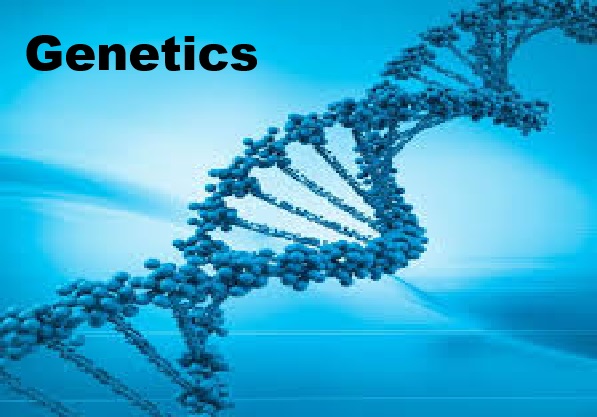ML Aggarwal Mensuration Exe-17.3 Class 10 ICSE Maths Solutions. We Provide Step by Step Answer of Exe-17.3 Questions for Mensuration as council prescribe guideline for upcoming board exam. Visit official Website CISCE for detail information about ICSE Board Class-10.
ML Aggarwal Mensuration Exe-17.3 Class 10 ICSE Maths Solutions
| Board | ICSE |
| Subject | Maths |
| Class | 10th |
| Chapter-17 | Mensuration |
| Writer / Book | Understanding |
| Topics | Solutions of Exe-17.3 |
| Academic Session | 2024-2025 |
Mensuration Exe-17.3
ML Aggarwal Class 10 ICSE Maths Solutions
Question 1. Find the surface area of a sphere of radius 14 cm
Answer :
Given radius of the sphere, r = 14 cm
Surface area of the sphere = 4πr2
= 4 × (22/7) × 142
= 4 × 22 × 14 × 2
= 2464 cm3
Hence the surface area of the sphere is 2464 cm2.
Question 2. Find the surface area of a sphere of diameter 21 cm
Answer :
Given diameter of the sphere, d = 21 cm
Radius, r = d/2 = 21/2 = 10.5
Surface area of the sphere = 4πr2
= 4 × (22/7) × 10.52
= 1386 cm2
Hence the surface area of the sphere is 1386 cm2.
Question 3. A shot-put is a metallic sphere of radius 4.9 cm. If the density of the metal is 7.8 g per cm3, find the mass of the shot-put.
Answer :
Radius of the metallic shot-put = 4.9 cm
Volume of the sphere, V = (4/3)πr3
V = (4/3) × (22/7) × 4.93
⇒ V = 493.005
⇒ V = 493 cm3 (approx)
Given Density = 7.8 g per cm3
Density = Mass/Volume
Mass = Density × Volume
= 7.8 × 493
= 3845.4 g
Hence, the mass of the shot put is 3845.4 g.
Question 4. Find the diameter of a sphere whose surface area is 154 cm2.
Answer :
Surface area of a sphere = 154 cm2
Surface area of the sphere = 4πr2
4 × (22/7) × r2 = 154
⇒ r2 = 154 × 7/(22 × 4) = 49/4
⇒ r = √49/2
Diameter = 2 × r = 2 × √49/2 = √49 = 7
Hence the diameter of the sphere is 7 cm.
Mensuration Exe-17.3
ML Aggarwal Class 10 ICSE Maths Solutions
Page 413
Question 5. Find:
(i) the curved surface area.
(ii) the total surface area of a hemisphere of radius 21 cm.
Answer :
Radius of a hemisphere = 21 cm
(i) Curved surface area = 2πr2
Curved surface area of the hemisphere = 2πr2
= 2 × (22/7) × 212
= 2 × 22 × 3 × 21
= 2772 cm2
Hence the curved surface area of the hemisphere is 2772 cm2.
(ii) Total surface area of the hemisphere = 3πr2
= 3 × (22/7) × 212
= 3 × 22 × 3 × 21
= 4158 cm2
Hence, the total surface area of the hemisphere is 4158 cm2.
Question 6. A hemispherical brass bowl has inner- diameter 10.5 cm. Find the cost of tin-plating it on the inside at the rate of Rs 16 per 100 cm2.
Answer :
The inner diameter of hemispherical bowl = 10.5 cm
Radius, r = d/2 = 10.5/2 = 5.25 cm
Curved surface area of the bowl = 2πr2
= 2 × (22/7) × 5.252
= 173.25 cm2
Rate of tin plating = Rs.16 per 100 cm2
So total cost = 173.25 × 16/100 = 27.72
Hence the cost of tin plating the bowl on the inside is Rs. 27.72.
Question 7. The radius of a spherical balloon increases from 7 cm to 14 cm as air is jumped into it. Find the ratio of the surface areas of the balloon in two cases.
Answer :
Original radius of balloon = 7 cm
Radius after filling the air in it = 14 cm
The surface area of balloon, the original position
Surface area of the sphere = 4πr2
Ratio of surface areas of the balloons = 4πr2/4πR2
= r2/R2
= 72/142
= 1/4
Hence the ratio of the surface areas of the spheres is 1:4.
Question 8. A sphere and a cube have the same surface. Show that the ratio of the volume of the sphere to that of the cube is √6 : √π
Answer :
Let the edge of a cube = a
Surface area = 6a2
and surface area of sphere = 6a2
Given sphere and cube has same surface area.
4πr2 = 6a2
⇒ πr2/a2 = 6/4
∴ r/a = √6/2√π
Volume of the sphere, V1 = (4/3)πr3
Volume of the cube, V2 = a3
∴ V1/V2 = 4πr3/3a3
⇒ V1/V2 = 4π√63/(3 × 2√π)3
⇒ V1/V2 = (4π × 6√6)/(3 × 8π × √π)
∴ V1/V2 = √6/√π
Hence proved.
Question 9.
(a) If the ratio of the radii of two sphere is 3 : 7, find :
(i) the ratio of their volumes.
(ii) the ratio of their surface areas.
(b) If the ratio of the volumes of the two sphere is 125 : 64, find the ratio of their surface areas.
Answer :
(a) Ratio in radii of two spheres = 3 : 7
Volume of sphere = (4/3)πr3
Ratio of the volumes = (4/3)πr13/(4/3)πr23
= r13/ r23
= 33/73
= 27/343
Hence, the ratio of their volumes is 27 : 343.
(ii) Surface area of a sphere = 4πr2
Ratio of surface areas of the spheres = 4πr12/4πr22
= r12/r22
= 32/72
= 9/49
Hence, the ratio of the surface areas is 9:49.
(b) Given ratio of volume of two spheres = 125/64
(4/3)πr13/(4/3)πr23 = 125/64
⇒ r13/ r23 = 125/64
Taking cube root on both sides
r1/r2 = 5/4
Ratio of surface areas of the spheres = 4πr12/4πr22
= r12/r22
= 52/42
= 25/16
Hence, the ratio of the surface areas is 25:16.
Question 10. Find the volume of a sphere whose surface area is 154 cm².
Answer :
Given that
Surface area of a sphere = 154 cm²
4πr2 = 154
⇒ 4 × (22/7) × r2 = 154
⇒ r2 = (154 × 7)/(4 × 22)
⇒ r2 = 49/4
⇒ r = 7/2
Volume of the sphere = (4/3)πr3
= (4/3) × (22/7) × (7/2)3
= 539/3
= 179.666
= 179.67 cm3 (approx)
Hence the volume of the sphere is 179.67 cm3
Question 11. If the volume of a sphere is 179.2/3. Find its radius and surface area.
Answer :
Given volume of the sphere is 179.2/3
(4/3)πr3 = 179.2/3 = 539/3
⇒ (4/3) × (22/7) × r3 = 539/3
⇒ r3 = (539 × 3 × 7)/(4 × 22 × 3)
⇒ r3 = 49 × 7/8
⇒ r3 = (7 × 7 × 7)/(2 × 2 × 2)
Taking cube root on both sides, we get
r = 7/2 = 3.5 cm
Surface area of the sphere = 4r2
= (4/3) × (22/7) × (7/2)2
= 22 × 7
= 154 cm2
Hence, the radius and the surface area of the sphere is 3.5 cm and 154 cm2 respectively.
Question 12. A hemispherical bowl has a radius of 3.5 cm. What would be the volume of water it would contain?
Answer :
Radius of a hemispherical bowl (r) = 3.5 cm
= 7/2 cm
Volume of the hemisphere = (2/3)πr3
= (2/3) × (22/7) × (7/2)3
= 11 × 49/6
= 539/6
= 89. 5/6 cm3
Hence, the volume of the hemispherical bowl is 89.5/6 cm3.
(ML Aggarwal Mensuration Exe-17.3 Class 10)
Question 13. The surface area of a solid sphere is 1256 cm². It is cut into two hemispheres. Find the total surface area and the volume of a hemisphere. Take π = 3.14.
Answer :
Given surface area of the sphere = 1256 cm2
4πr2 = 1256
⇒ 4 × 3.14 × r2 = 1256
⇒ r2 = 1256 × /3.14 × 4
⇒ r2 = 100
⇒ r = 10 cm
Total surface area of the hemisphere = 3πr2
= 3 × 3.14 × 102
= 3 × 3.14 × 100
= 942 cm2
Hence,
the total surface area of the hemisphere is 942 cm2.
Volume of the hemisphere = (2/3)πr3
= (2/3) × 3.14 × 103
= (2/3) × 3.14 × 1000
= (2/3) × 3140
= 6280/3
= 2093.1/3 cm3
Hence, the volume of the hemisphere is 2093.1/3 cm3
-: End of ML Aggarwal Mensuration Exe-17.3 Class 10 ICSE Maths Solutions :–
Return to :- ML Aggarwal Solutions for ICSE Class-10
Thanks
Please Share with Your Friends


